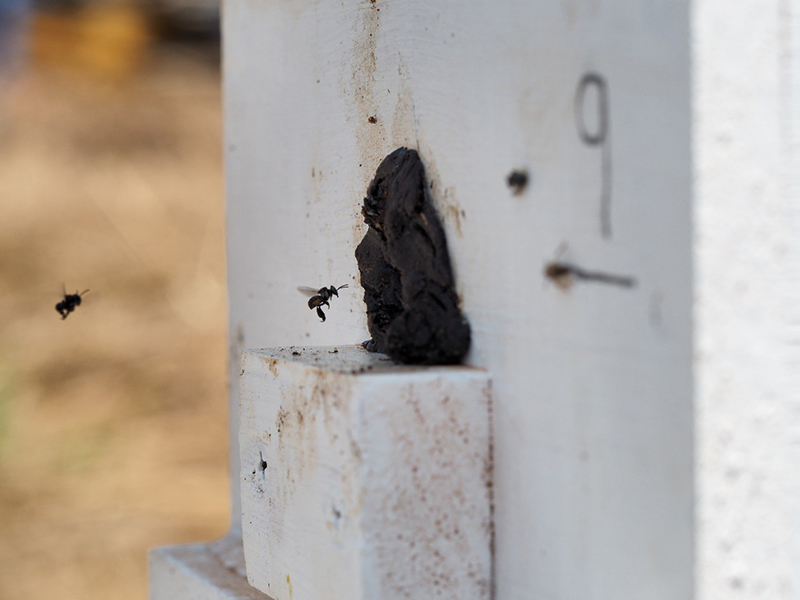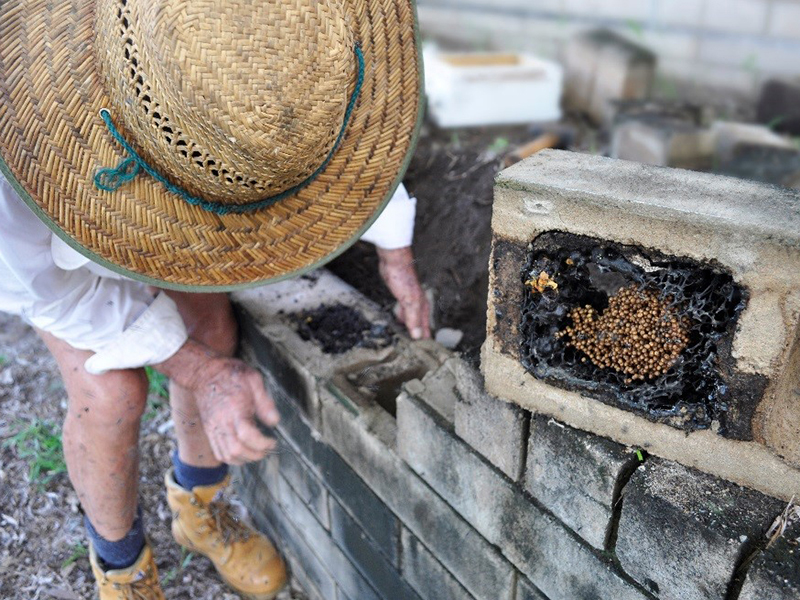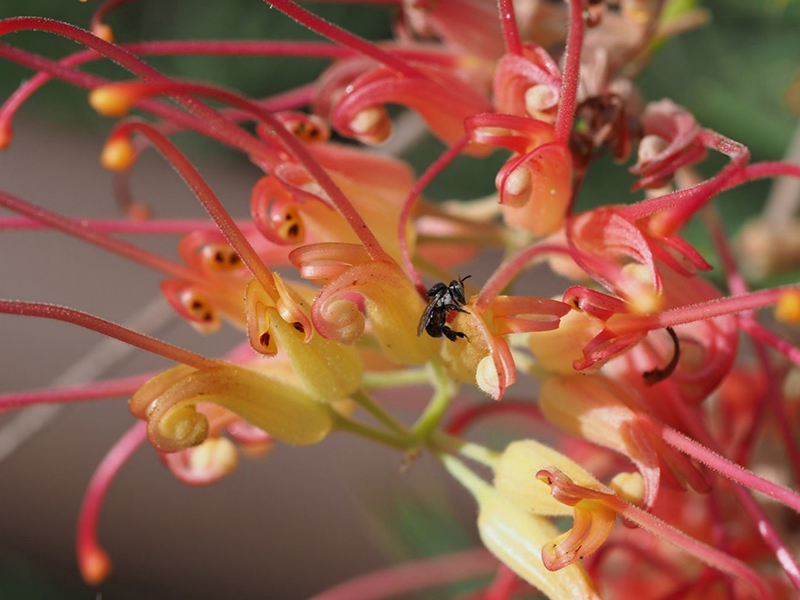The buzz about stingless bees: sweating it out in tropical fruits
Horticulturalist Mark Traynor and Entomologist Mary Finlay-Doney have begun farming native stingless bees in a pilot study to improve fruit production in Northern Territory tropical fruit crops.
Native stingless bees (Tetragonula spp.) are abundant in Top End environments. Locally they are also known as sugar bag or sweat bees and they can regularly be found nesting in wall cavities and upturned containers as well as trees and termite mounds. The bees themselves are smaller than a house fly and unlike European honey bees their buzz is barely audible.
The stingless characteristic, along with the fact that they are a local species adapted to local conditions makes them an ideal potential candidate for managed pollination. To date, stingless bee keeping in the Northern Territory has focused on sustainable management of natural resources and backyard keepers with a small number of hives. At Berrimah Farm Mark and Mary have established a small apiary of a dozen hives which they are planning to propagate over the coming year.
“We are collecting hives from structures around the farm which will be knocked down during the [Northcrest] development” Mark says. These ‘rescued’ bees form the basis of an apiary which will be used to develop hive management practices specific to the local species Tetragonula mellipes. Historically stingless bee research in Australia has focused on Tetragonula carbonaria, a species which is restricted to the east coast. At Berrimah Farm, the researchers are testing various hive structures and designs as well as recording ecological data about natural hives to get a picture of what local bees require to flourish. “Already we are finding that accepted wisdom for east coast stingless bee species does not hold true for our local mellipes,” Mark says.
Preliminary behavioural observations have shown that the bees begin flying at first light and make the majority of their pollen collections before midday. “This year we will complement these behavioural studies with an investigation into the flowering phenology of rambutans,” says Mary. “We hope to identify if the bees are actively foraging when the flowers are receptive to pollination. Each piece of information we gather contributes to our understanding of these bees and their potential use as managed pollinators”.
Plans for this year include field observations on grower’s properties and an open day at the rambutan block at Coastal Plains Research Farm. The open day will include a demonstration of hive designs and apiculture practices and, if the hives are thriving, possibly even some honey tasting.
For more information about native bees as pollinators, contact Mary Finlay-Doney on 8999 2260. For information about European Honey Bees and beekeeping visit the NT Government website.
Give feedback about this page.
Share this page:
URL copied!


